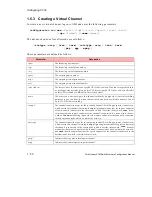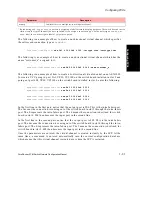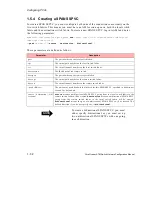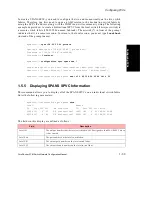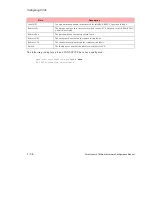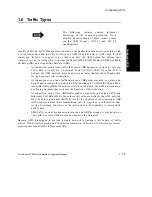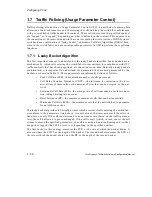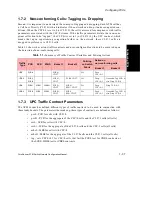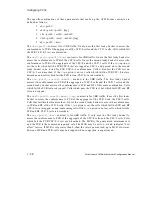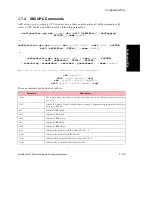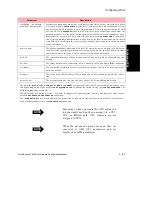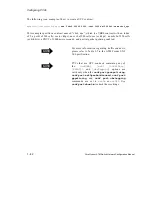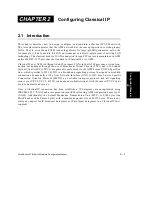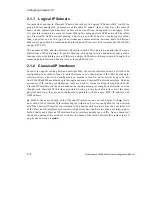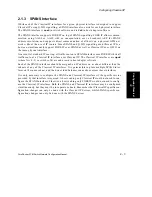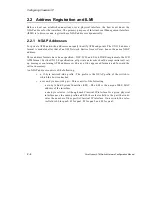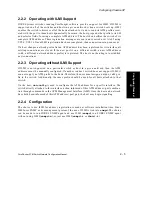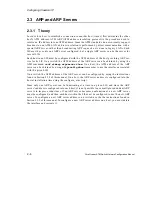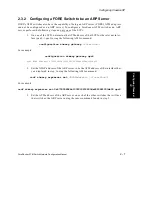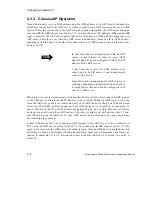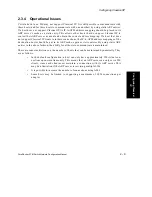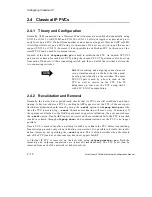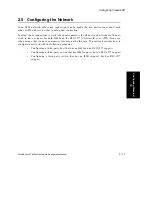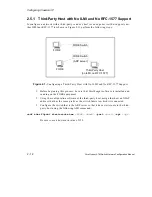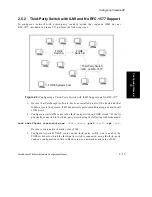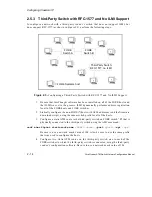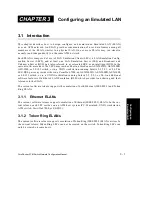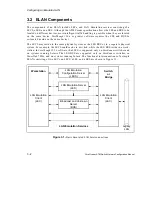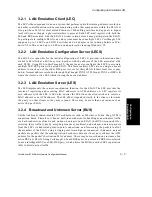
2 - 2
ForeRunner
ATM Switch Network Configuration Manual
Configuring Classical IP
2.1.1 Logical IP Subnets
An important concept in Classical IP networks is that of a Logical IP Subnet (LIS). An LIS is a
group of hosts configured as members of the same IP subnet (that is, they have the same IP
network and subnetwork numbers). In this sense, one LIS can be equated to one legacy LAN.
It is possible to maintain several overlaid LISs on the same physical ATM network. Therefore,
in a Classical IP ATM network, placing a host on a specific subnet is a logical choice rather
than a physical one. In this type of environment, communication between hosts in different
LISs is only permitted by communicating through an IP router which is a member of both LISs
(as per RFC-1577).
The number of LISs, and the division of hosts into each LIS, is purely an administrative issue.
Limitations of IP addressing, IP packet filtering, and administrative boundaries may guide a
manager into establishing several LISs onto a single ATM network. Keep in mind, though, that
communication between LISs must occur through IP routers.
2.1.2 Classical IP Interfaces
In order to support routing between multiple LISs, the switch software allows a switch to be
configured as a member of (and a router between) up to four distinct LISs. (The host adapter
software allows a host to be configured as a member of (and a router between) up to 16 dis-
tinct LISs.) Each LIS membership is through a separate Classical IP network interface. Existing
system level IP routing configuration tools are used to control routing through each of the
Classical IP interfaces in the same manner as routing among several physical interfaces. Even
though each Classical IP interface associated with a given physical interface uses the same
physical hardware, they are each configured separately with their own MTU, IP address, and
ATM address.
By default, the name of each of the Classical IP interfaces on a switch begins with
qa
. (On a
host, each of the Classical IP interfaces begins with
ci
and is user-configurable.) On a switch,
all of the Classical IP interfaces associated with physical unit zero have
a
as the next letter. All
of the Classical IP interfaces associated with physical unit one have
b
as the next letter, and so
forth. Finally, each Classical IP interface has its interface number as a suffix. As an example of
the above naming convention for switches, the name of the third Classical IP interface (unit 2)
on physical unit one is
qab2
.
Содержание forerunner series
Страница 6: ......
Страница 16: ...TOC 10 ForeRunner ATM Switch Network Configuration Manual Table of Contents ...
Страница 20: ...LOF 4 ForeRunner ATM Switch Network Configuration Manual List of Figures ...
Страница 22: ...LOT 2 ForeRunner ATM Switch Network Configuration Manual List of Tables ...
Страница 30: ...viii ForeRunner ATM Switch Network Configuration Manual Preface ...
Страница 144: ...3 58 ForeRunner ATM Switch Network Configuration Manual Configuring an Emulated LAN ...
Страница 180: ...6 12 ForeRunner ATM Switch Network Configuration Manual ATM Forum PNNI ...
Страница 220: ...9 6 ForeRunner ATM Switch Network Configuration Manual Configuring Timing ...
Страница 300: ...D 24 ForeRunner ATM Switch Network Configuration Manual Configuring FramePlus Modules ...
Страница 308: ...Acronyms 8 ForeRunner ATM Switch Network Configuration Manual Acronyms ...
Страница 346: ...Glossary 38 ForeRunner ATM Switch Network Configuration Manual Glossary ...
Страница 352: ...Index 6 ForeRunner ATM Switch Network Configuration Manual Index ...

